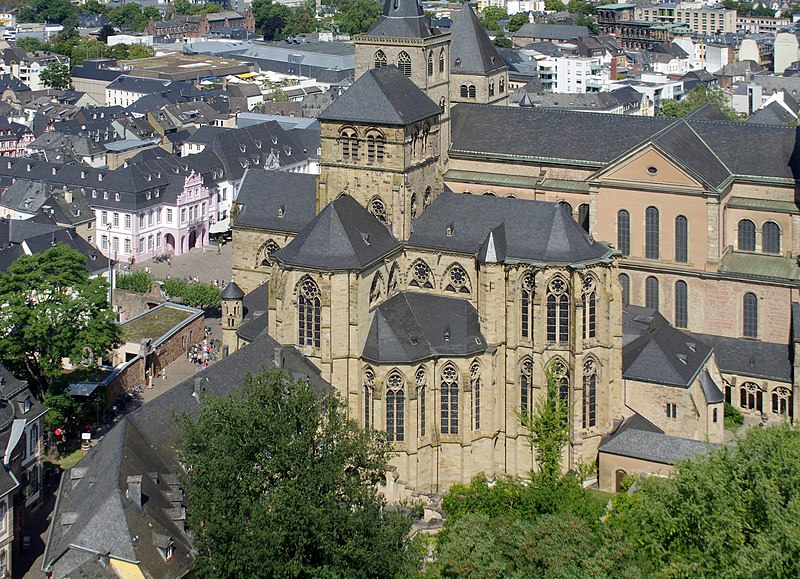The Liebfrauenkirche, or Church of Our Lady, in Trier, Germany, stands as a remarkable testament to Gothic architecture and holds the distinction of being the oldest Gothic church in the country. Nestled in the heart of Trier, this iconic church captivates visitors with its graceful design, historical significance, and its role as a key component of the city’s UNESCO World Heritage Site status.
The construction of the Liebfrauenkirche began in the early 13th century, around 1230, making it a contemporary of other prominent Gothic cathedrals in Europe. The church was built atop the foundations of a former Roman double church, a structure with two adjacent halls used for Christian worship. The decision to construct the Liebfrauenkirche on this site underscores Trier’s rich history as a Roman city and its subsequent evolution into a center of medieval Christianity.
One of the distinctive features of the Liebfrauenkirche is its unique architectural design. The church is characterized by a central, circular structure with an ambulatory, a layout known as a “Rotunda.” This design was inspired by the Holy Sepulchre in Jerusalem, creating a sense of sacred pilgrimage for those who enter the church. The circular nave is encircled by an ambulatory with radiating chapels, adding to the sense of symmetry and cohesion.
The exterior of the Liebfrauenkirche showcases the delicate tracery and pointed arches characteristic of Gothic architecture. The flying buttresses, slender columns, and intricately carved details exemplify the craftsmanship of the medieval builders. The entrance portal, adorned with sculptures depicting scenes from the Bible and Christian symbolism, invites visitors to explore the spiritual and artistic richness within.
The interior of the Liebfrauenkirche continues to captivate with its elegant simplicity. The circular nave, bathed in the soft glow of light filtering through the stained glass windows, creates an atmosphere of serenity and reverence. The windows themselves are notable for their medieval stained glass, depicting biblical narratives and saints in vibrant hues. The play of light and color within the church adds to its ethereal beauty.
The Liebfrauenkirche is also renowned for its “Black Madonna,” a statue of the Virgin Mary and the Christ Child located in the apse of the church. This medieval wooden sculpture, carved in the 13th century, holds deep religious significance and has been a focal point of pilgrimage for centuries. The Black Madonna is adorned with a silver crown and surrounded by votive offerings, attesting to the reverence and devotion of generations of worshipers.
Throughout its existence, the Liebfrauenkirche has weathered the ravages of time and historical events. The church has witnessed the evolution of architectural styles, the turbulence of wars, and the changing tides of cultural and religious practices. Its resilience and ability to endure as a living monument to medieval craftsmanship and spirituality are a testament to its cultural and historical importance.
The Liebfrauenkirche is not only a place of worship but also a cultural treasure that resonates with the collective memory of Trier. The church’s inclusion in the UNESCO World Heritage Site of the Roman Monuments, Cathedral of St. Peter and Church of Our Lady in Trier underscores its role in the broader historical and architectural context of the city.
Visitors to the Liebfrauenkirche are not only treated to the beauty of its architecture and art but also invited to contemplate the passage of time and the enduring nature of human creativity and faith. Whether admired from the outside against the backdrop of Trier’s skyline or experienced within its sacred confines, the Liebfrauenkirche remains a timeless beacon of Gothic elegance and a cherished symbol of Trier’s cultural heritage.

